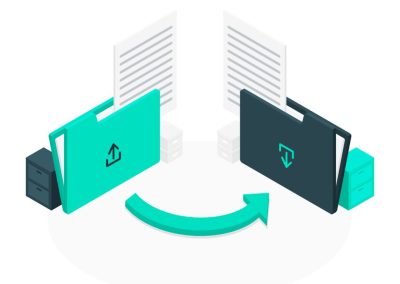In a previous article, we talked to you about the importance of keeping WordPress up to date, now we want to ask you what are the precautions to update WordPress, in that way you will avoid making mistakes that are serious for the operation of your website.
Here are the necessary precautions:
# 1: Check the compatibility of updates
The first thing you need to do is check that the updates actually result in a solution for your website.
There are plugins that help you test plugin updates in a safe environment. In fact, one way to avoid errors with plugin updates is that when installing them in your WordPress you add the option to “test update”.
With this option you can always do a check before each new update. This is how you can detect the potential conflicts that a particular update could generate. Because any change that is generated can be visualized in advance of its application in the real environment.
This is how, if when testing the update a conflict is detected in the test environment, you can prevent that from affecting your website and desist from updating a particular plugin.
# 2: Make sure you work with a child theme
A Child Theme is necessary to maintain WordPress without the risk of losing, not only in maintenance, It’s also useful for updates.
Just as you can avoid losing work when you update the parent theme that you use on your WordPress page.
Keep in mind that the child theme in WordPress is used to save the customization you make to the code of the parent theme. For example, if you make changes to the web design or CSS, or if you make programming customizations (PHP), the child code will save the changes that you can then implement in the parent code.
Therefore, if you don’t have a child theme, when updating the theme of your web page you can lose the changes that have been made on design and programming, they’re lost when updating the theme of the web page.
# 3: Do a review to verify that there are no conflicts
It’s important to read all the information for each update. Keep in mind that updates to the WordPress core, such as updates to themes and plugins, explain what has been changed and which ones are the best in the new version.
This can be similar to updating an application on your mobile device, there’s always information about the changes. However, few people read that information before updating.
In the report of changes of a new version of WordPress, of themes or plugins, It’s always possible to anticipate if there are possibilities of conflicts with other elements of the web system.
To give you an idea, let’s suppose that you are going to update the latest version of WordPress, but the information or change report explains that the code has been updated to the latest version of PHP, if you don’t read it and don’t take this into account, no you will know that you must also update the PHP on the server, and thus avoid conflicts.
# 4: Avoid doing WordPress updates on an active web page
A special recommendation that we would like to give you is that you always have an identical version of your website on a local server, or a subdomain that’s not indexed.
This is how you can apply the changes in such safe and parallel environments and thus make sure that everything is going well, to proceed to apply the updates on your active and public website.
In fact, this is the highest security measure you can take into account. That way you will avoid failures that can cost you expensive.
We hope this content is useful for you, if so, leave us a comment.
Source: webfactoryltd.com
ThemeKraft offers the opportunity to create content for us. Guest Post
Guille is passionate about creating WordPress solutions. He have 12 years of experience in different technologies and languages. He is an entrepreneur of pure strain! He likes new challenges and shares his knowledge with everyone.







0 Comments